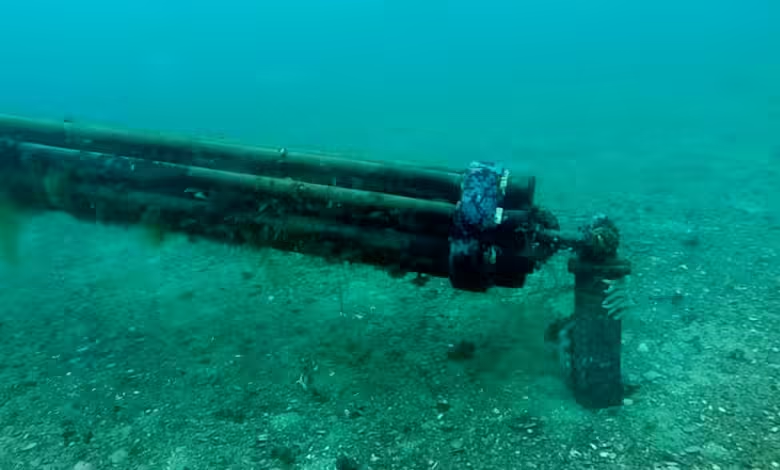Elastic Mooring Systems | The Future Secure Marine Anchoring
Advancing Marine Safety with Elastic Mooring Systems

The marine industry has seen numerous innovations over the years, with mooring systems being one of the key areas of development. Among the latest and most promising advancements is the elastic mooring system, which offers significant advantages over traditional mooring methods. Elastic mooring systems, like those provided by Hazelett Marine, are designed to adapt to changing environmental conditions while offering reliable and durable solutions for securing vessels.
In this blog, we will explore what elastic mooring is, how it works, and why it has become a popular choice for marinas, waterfront properties, and offshore installations. Additionally, we will delve into the benefits of using Hazelett Marine’s elastic mooring systems and how they can enhance marine safety and efficiency.
What is Elastic Mooring?
Elastic mooring systems consist of a combination of materials that allow for flexibility and controlled movement. These systems use elastic elements, such as specialized mooring ropes or chains, that stretch and retract based on the forces applied by waves, tides, and boat movements. The elastic nature of the system allows it to absorb energy and minimize strain on the anchored boat, dock, or buoy, providing a more stable and secure mooring solution.
Elastic moorings are designed to replace traditional rigid mooring methods, which rely on fixed chains or ropes that can become stressed and even break under extreme conditions. By allowing for controlled movement, elastic moorings reduce the chances of damage to the vessel, the dock, and the mooring equipment itself.
How Elastic Mooring Systems Work
At the core of an elastic mooring system is the elastic component, typically made from marine-grade materials like elastomeric polymers. This elastic section is combined with a traditional anchor and rope setup to form a complete mooring system. The elasticity of the mooring line allows it to stretch and retract, giving the system the ability to absorb forces caused by wind, waves, and tides.
When the forces on the boat or dock increase, such as during rough weather, the elastic component stretches to reduce tension. As the conditions calm, the mooring line returns to its original length, keeping the boat stable without pulling too hard on the anchor or dock.
Key Components of an Elastic Mooring System
- Anchor: The anchor secures the mooring system to the seabed. It can be a standard anchor, a concrete block, or another type of seabed attachment.
- Elastic Mooring Line: This is the heart of the system. It provides flexibility and stretch, allowing the mooring to absorb energy from waves and tides without putting excessive strain on the vessel or dock.
- Buoys and Markers: These floating components help keep the system in place and indicate the location of the mooring.
- Swivels and Shackles: These hardware components allow for smooth movement and prevent twisting of the mooring line.
- Rope or Chain: While the elastic component provides flexibility, additional rope or chain can be used for extra strength and security.
Benefits of Elastic Mooring Systems
Elastic mooring systems offer a range of advantages over traditional mooring setups. Let’s take a closer look at some of the key benefits:
1. Reduced Strain on Boats and Docks
One of the most significant advantages of elastic mooring systems is their ability to reduce strain on the boat, dock, and mooring components. By absorbing and distributing the forces caused by wind, waves, and tidal changes, elastic moorings prevent damage to both the vessel and the dock.
Traditional mooring systems, which rely on rigid lines, can become stressed during storms or high tides, causing wear and tear on the equipment. In contrast, the elastic nature of these systems ensures that there is minimal strain even in rough weather conditions, leading to a longer lifespan for the equipment and less maintenance over time.
2. Environmental Benefits
Elastic mooring systems, like those provided by Hazelett Marine, are environmentally friendly. The elastic lines create less disturbance on the seabed compared to traditional chain mooring systems, which can drag along the seabed, causing damage to marine ecosystems such as seagrass beds and coral reefs.
With elastic mooring, the system is designed to remain stationary, minimizing the environmental impact. This makes it an ideal choice for ecologically sensitive areas where seabed preservation is a priority.
3. Improved Stability in Changing Conditions
One of the key features of elastic mooring systems is their ability to handle changing water levels and wave conditions without compromising stability. The elastic lines stretch and contract to accommodate tidal changes, making the system highly adaptable to varying water conditions.
This is particularly beneficial for marinas and offshore installations located in areas with significant tidal fluctuations or rough sea conditions. Hazelett Marine’s elastic mooring systems are designed to withstand these challenges, ensuring that boats remain securely moored in any situation.
4. Longevity and Low Maintenance
Because elastic mooring systems experience less wear and tear than traditional mooring setups, they tend to last longer and require less frequent maintenance. The elastic lines are resistant to corrosion, UV damage, and abrasion, ensuring that they remain in good condition even after extended exposure to harsh marine environments.
Hazelett Marine’s elastic mooring systems are built to last, providing a cost-effective solution that minimizes the need for frequent repairs or replacements. This is especially valuable for marina operators and boat owners looking to reduce long-term maintenance costs.
5. Safety and Reliability
The safety of both the boat and the crew is a top priority in any mooring situation. Elastic mooring systems provide a higher level of safety because they reduce the risk of sudden line failure caused by excessive tension. The elasticity of the mooring line allows it to absorb energy from waves and wind, preventing shock loads that can damage the boat or break the mooring line.
Hazelett Marine’s systems are tested for reliability and performance, ensuring that they meet the highest standards of safety. This makes them an excellent choice for marinas, private docks, and offshore applications where security and reliability are essential.
Applications of Elastic Mooring Systems
Elastic mooring systems are versatile and can be used in a variety of marine settings. Here are some common applications:
1. Marinas and Docks
Elastic moorings are ideal for marinas and docks where boats are constantly coming and going. The flexibility of the system allows boats to be securely moored without the need for frequent adjustments, making it easier for marina staff and boat owners to manage multiple vessels.
2. Offshore Installations
For offshore structures, such as oil rigs, buoys, and aquaculture farms, elastic moorings provide stability and security in open water environments. These systems are designed to handle the challenges of offshore conditions, including strong currents and waves.
3. Recreational Boating
Elastic mooring systems are also popular among recreational boaters who want a reliable and low-maintenance solution for securing their vessels. Whether you’re anchoring your boat at a private dock or a public mooring site, an elastic system can provide peace of mind and ease of use.
4. Environmentally Sensitive Areas
Because elastic moorings cause less disruption to the seabed, they are an excellent choice for areas where environmental preservation is a priority. Many marine parks and conservation areas are turning to elastic moorings to protect fragile ecosystems while still allowing for boating and anchoring activities.
Hazelett Marine: Leaders in Elastic Mooring Solutions
Hazelett Marine has been at the forefront of developing innovative mooring systems that prioritize safety, durability, and environmental responsibility. Our elastic mooring systems are designed to meet the needs of a wide range of marine environments, from small marinas to large offshore installations.
Why Choose Hazelett Marine’s Elastic Mooring Systems?
- Proven Performance: Our systems are engineered to withstand the most demanding conditions, providing reliable performance year after year.
- Environmentally Friendly: Hazelett Marine’s mooring solutions are designed to minimize environmental impact, making them a responsible choice for eco-conscious marinas and boaters.
- Low Maintenance: Our elastic mooring systems are built to last, reducing the need for constant repairs or replacements, and offering long-term value.
- Customizable Solutions: We understand that every marine environment is unique. That’s why we offer customizable mooring solutions tailored to meet the specific needs of your site.
Conclusion
Elastic mooring systems represent a significant advancement in marine anchoring technology, offering improved safety, reduced environmental impact, and greater flexibility compared to traditional mooring methods. Hazelett Marine is proud to be a leader in this field, providing high-quality elastic mooring systems that deliver exceptional performance and durability in a variety of marine environments.
Whether you’re managing a marina, operating an offshore installation, or simply looking for a secure way to moor your boat, Hazelett Marine has the expertise and products to meet your needs. Contact us today to learn more about how our elastic mooring systems can benefit your operations and keep your vessels safe and secure.


